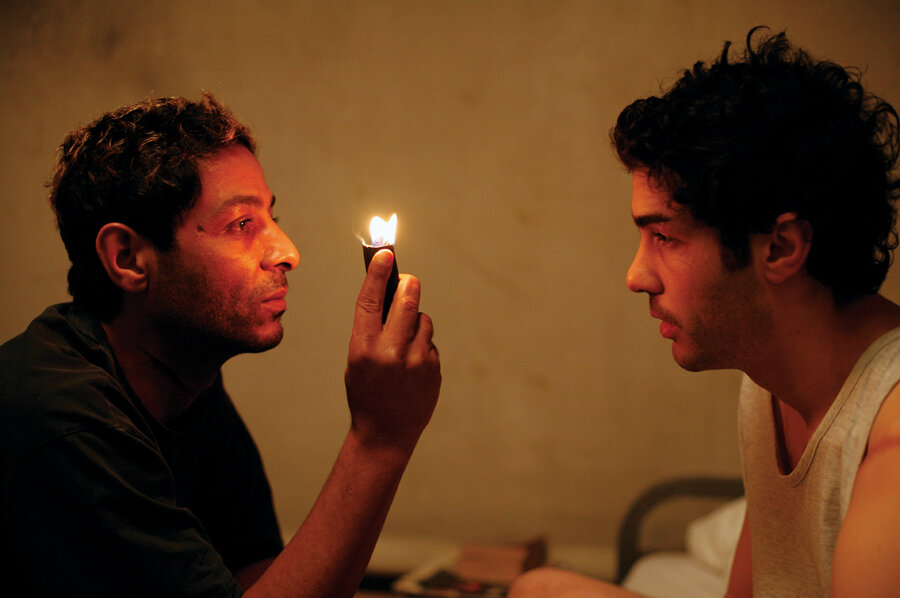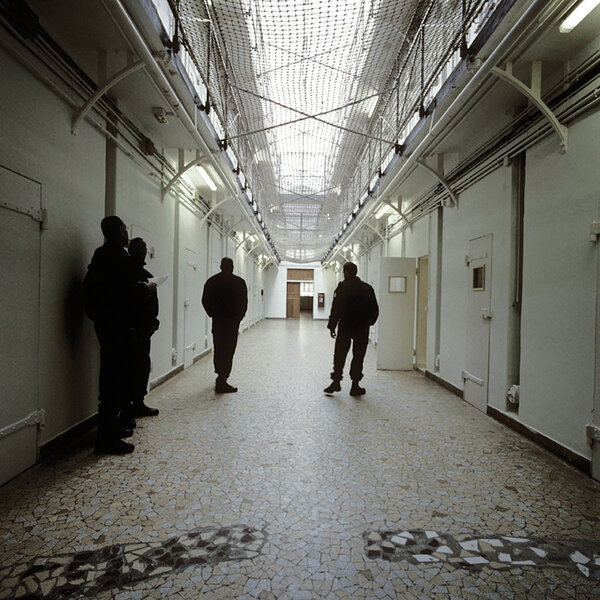'A Prophet': France faces its forgotten prisons
Loading...
| Paris
"A Prophet," a sometimes violent and dark prison-genre film, was the talk of French cinema last fall. It opened up the world of ethnic gangs in French prisons, not a typical theme. En route to its current release in the United States, it was selected here as the French Oscar nomination this year.
The film's cast is made up of mostly unknown actors, and it is hailed for bringing new blood to the French film noir tradition. Director Jacques Audiard hired inmates as consultants and extras, and took special care to render authentic settings, sound, and atmosphere as Corsican gangs are depicted having it out with an Islamist group in a prison outside Paris.
Beyond being hailed for its cinematic virtues, the film's realism in depicting notoriously overcrowded and violent French prisons was so affecting that it drew public comment by French politicians, including Fadéla Amara, minister in charge of French suburbs or banlieues, who hoped it would not romanticize crime figures in the way the 1983 American film "Scarface" did.
At the same time, an exhibit on prison photography opened at the Museum of the History of Paris (Musée Carnavalet, until July 10) that also draws aside a curtain on a prison world that has long been shrouded here.
The title, "Impossible Photography, Parisian Prisons (1851-2010)," says much about the difficulty of access. It took 18 months for permission to open the doors of the Prison de la Santé in Paris to photographers. "The idea of the exhibit was to show how hard it is to depict the reality of the prison in pictures, showing different angles and points of view," says curator Catherine Tambrun. "The reason for the official reluctance is the fact that the Santé is very old and dilapidated, as it was built in 1867."
The film and exhibit go a long way toward exposing the dark and claustrophobic universe of French prisons. In the 1960s, when President Charles de Gaulle's justice minister painted a bleak picture of overcrowding, decay, and violence in the Republic's prisons, the president allegedly quipped, "It's a good thing they can escape!" In report after report since then, it seems little has changed.
"A Prophet" tells the story of Malik, a young, illiterate, Arab petty delinquent who enters jail as a nobody and exits as an underworld boss. With no known links to the outside world, he eventually finds a family, of sorts, in jail.
First he finds the fatherly – and abusive – figure of César Luciani, a Corsican gangster whose crew bosses the prison. César orders Malik to kill Reyeb, an Arab who is going to testify against him. Malik doesn't have a choice, and for rest of the film the strangely benevolent ghost of Reyeb visits Malik in his cell.
Malik becomes the Corsicans' lackey and errand boy, and is then viewed as a traitor to his race by the barbus – the clan of bearded Islamists within the prison. Here lies the movie's main point: Malik is no more an Arab than a Corsican or a Frenchman. Rather, he manages to play one against the other. He becomes in a sense his own man, with the help of the brotherly figure of Ryad, who teaches him to write and read and becomes his partner in setting up a drug-smuggling business.
Yet director Audiard describes "A Prophet" as "anti-Scarface": The incoherent rage and hubris of Al Pacino's famed and fated Tony Montana character are contrasted by Malik's demure, almost shy, demeanor. It's more about rising to the top through guile and quick thinking.
Still, "A Prophet" is not "The Shawshank Redemption"; Malik is not Tim Robbins's character Andy Defresne, who was in fact innocent. The tale is bleak not triumphant. Few characters, including the authorities, can be counted on to give him protection. In the heated debate after the film opened, State Secretary for Justice Jean-Marie Bockel felt it necessary to say: "This movie is a compound of realities, of tragedies, of malfunctions that may happen in the prison system as a whole, and over time."
In June 2008, President Nicolas Sarkozy told the French Assembly that "the state of our prisons is a shame to the Republic" and followed up in November 2009 by passing a much-awaited penitentiary bill aimed at clarifying and harmonizing the regulations within the penitentiary system and solving the most blatant problems, namely overcrowding, poor sanitary conditions, and violence. Human rights groups remain unconvinced.
"A Prophet" may have had some effect on public awareness: "When we meet the public to raise awareness about prison-related issue, people always bring it up. It seeps into mentalities," says Adelaide Metereau, vice president of Genepi, a students' association that works in prisons.
"Impossible Photography" mixes history, sociology, and art, revealing a narrative of Parisian prisons from the days of the Bastille to our times. Almost all the photographs were commissioned officially and not intended for public use. Ms. Tambrun points out that not a single photograph of the interior of a French jail exists between 1934 and 1974, underlying the theme that despite much verbiage on bringing enlightened values to incarceration, prison has always been a secret world.
• Staff writer Robert Marquand contributed to this story.






